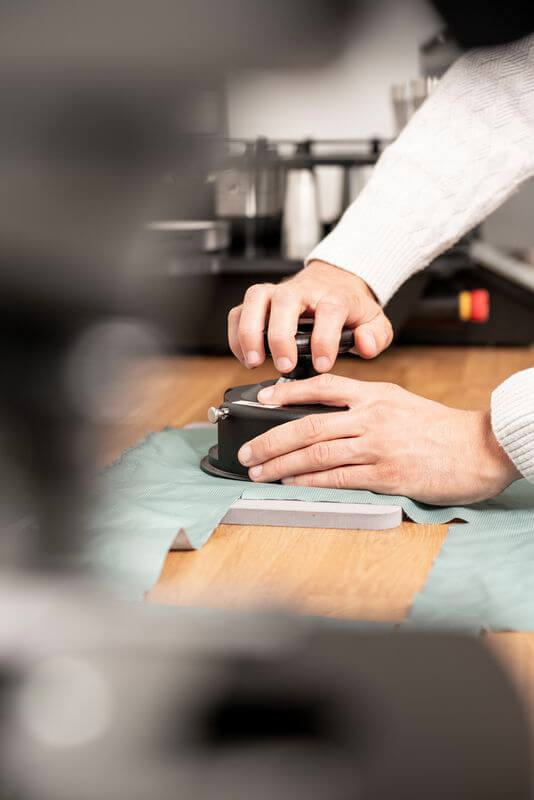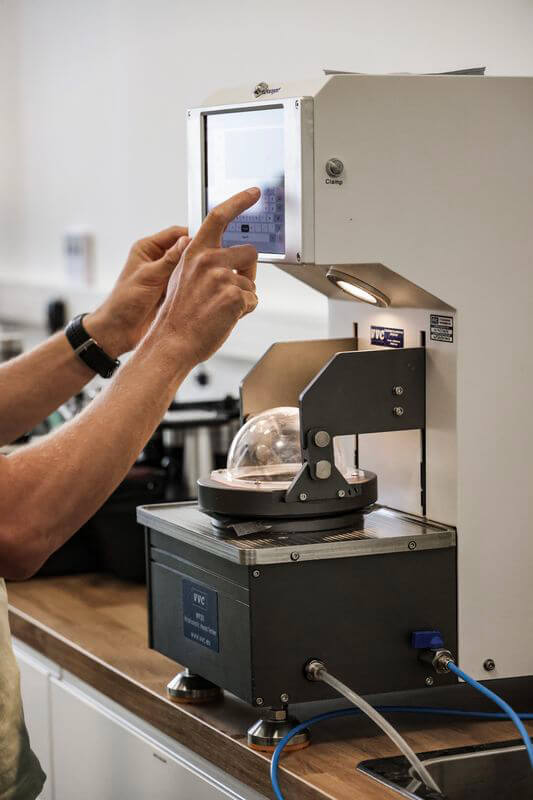

R&D MINUTE
AT THE HEART OF NANOVENT® TECHNOLOGY

Nanovent® technology, developed by Samaya, is the first membrane specially designed for tents. It now makes it possible to offer single-wall tents optimized for breathability and air permeability, without compromising on waterproofing. Ghislain Pipers, co-founder of Samaya, explains the choice of single-wall design and the key features of Nanovent® technology.
Ghislain Pipers: Nanovent® is a technology we have developed for our single-wall tents. This technology consists of a random interweaving of polyurethane filaments 1 million times smaller than 1 meter. The electrospinning process makes it possible to manage the density of the interlacing so that the membrane's pores are large enough to let air through, but too small to let water droplets through. We combine this electrospun membrane with two layers of nylon. The inner layer is a hydrophilic nylon which, when condensation occurs, diffuses the water over a large surface area, enabling it to dry more rapidly. The outer layer is a hydrophobic nylon, with a water-repellent treatment that allows water to flow freely over its surface. These layers ensure the fabric's mechanical strength, while protecting the electrospun membrane.
GP : The majority of tents on the market are double-walled. This design implies the presence of two fabrics to separate the tent's interior from its external environment, a system that makes the product heavier and increases its folded volume. At Samaya, we saw in the single-wall design an opportunity to revolutionize the equipment and practice of bivouac in many applications. Imagining and proposing single-wall tents optimized for waterproofing, breathability and air permeability became an obsession for our R&D team. Gradually, we came to realize that the single-wall tent offers many more advantages than just weight savings. This design also offers greater resistance to wind and weather, thanks to the greater solidarity between the tent's various components. Depending on conditions, the ease with which the tent can be set up and dismantled can prove invaluable.


GP : We have identified three essential criteria for the effectiveness of single-wall tents: waterproofing, air permeability and breathability.
For waterproofing, our walls are 10,000 mm impervious, given that the equivalent water column generated by a very heavy rainfall without friction is 2,000 to 3,000 mm. As for the floor, the pressure exerted by the weight of the individual requires greater impermeability. The majority of floors in our 4-season tents are therefore 20,000 mm impermeable.

When it comes to air permeability, it's essential that the single-wall allows air renewal phenomena to take place, whether through pressure or diffusion of molecules. In the former case, the pressure exerted on the wall allows a flow of air to pass through, expelling the CO2 emitted by the user's breathing and providing new oxygen. For the second, the single-wall design must allow this natural phenomenon of environmental homogenization to take place, so that the different levels of material concentration (in our case, the levels of CO2 and O2) outside and inside the tent tend to equalize.
Finally, a single-wall fabric must be breathable, which is understood as the ability of a fabric to evacuate water vapor, particularly that generated by breathing, since an individual produces an average of 800 mL of water in 24 hours.
We have designed and optimized our Nanovent® membrane to meet all three criteria, whatever the weather or terrain.




